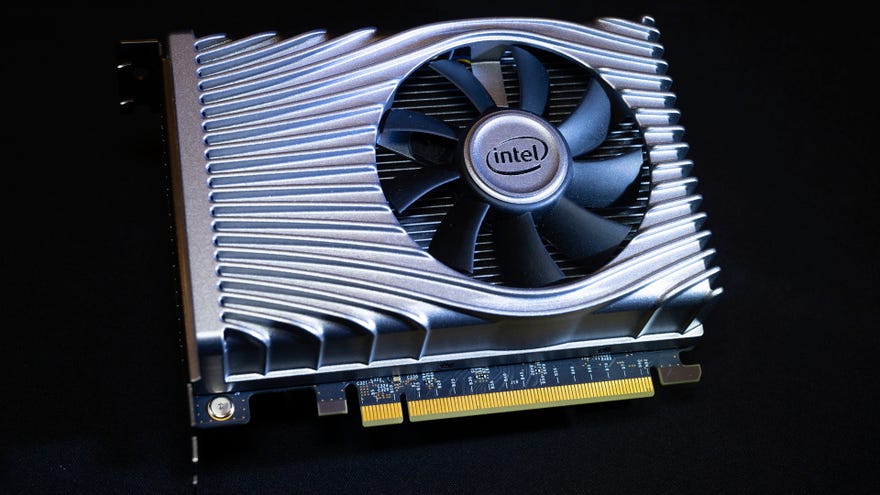Intel's first Xe graphics card is still on track for release in 2020
But the Big Navi and RTX competitors aren't likely to arrive until next year.
Intel have confirmed that their first discrete Xe GPU is still on track to release before the end of 2020. Code-named DG1, the graphics card is currently in production and will begin shipping before the end of the year, just in time for an almighty showdown between the upcoming Nvidia Ampere cards and the next-generation of Big Navi GPUs.
Information around the DG1's exact specs are still thin on the ground at the moment, but Intel have revealed a few more details about its Xe-LP micro architecture at their Architecture Day 2020 conference today. Xe-LP (standing for low power) is one of two Xe-based architectures being readied by Intel, and it's set to be their most efficient architecture for PC and laptops yet.
Xe-LP GPUs will contain up to 96 EUs, or execution units, according to Intel (which is their version of Nvidia's CUDA cores and AMD's Stream Processors), and will support a number of DirectX 12 features such as asynchronous compute (which allows it to perform graphics and compute workloads simultaneously), sampler feedback (which allows games to load into memory only the bits it needs for a particular scene) and view instancing (which is all to do with running shaders and rendering).
It will also support Intel's new Intel Graphics Command Centre software, which will introduce features such as instant game tuning, video capture, streaming and adaptive image sharpening for improved performance, the latter of which will also supported by AMD's Big Navi cards and their second gen RDNA architecture and Nvidia's RTX GPUs.
The second Xe architecture they revealed today was Xe-HP (standing for high power). The first Xe-HP chip "has been powered on and [is] back from the labs", according to Intel, but it won't be available until next year. Still, the key thing about Xe-HP is that it's going to scalable, providing "data centre-class, rack-level media performance" in a range of different form factors and variants.
One such variant is the Xe-HPG, which is Intel's gaming optimised micro architecture. This is likely to be where Intel's proper Nvidia and AMD gaming GPU competitors will originate from, as Intel says Xe-HPG will combine the performance per watt building blocks from their Xe-LP microarchitecture with the scale of Xe-HP to create a range of gaming-focused configurations.
Intel also confirmed that Xe-HPG will also have GDDR6 memory and accelerated ray tracing support, and that their first Xe-HPG GPUs are expected to start shipping sometime in 2021.
As a result, it will probably still be some time before we see the epic Intel vs Nvidia vs AMD showdown we've been waiting for, but I'm still very intrigued by what Intel's DG1 Xe card is going to be capable of. When they first showed it off one of their mobile Xe chips at CES earlier this year, it was able to play Destiny 2 at a steady frame rate on a reasonably thin-looking laptop. Intel also said at the time that their Xe mobile GPUs will be able to double the graphics performance of their integrated Core graphics chips, too, which could signal the end of big expensive gaming laptops - and if that's what their mobile versions are going to be offering, then I can't wait to see what their Xe-LP GPUs are going to do to the budget end of the current graphics card spectrum.
Alas, we still don't know exactly when Intel's Xe DG1 GPU will arrive before the end of the year, but it's definitely one to watch.

